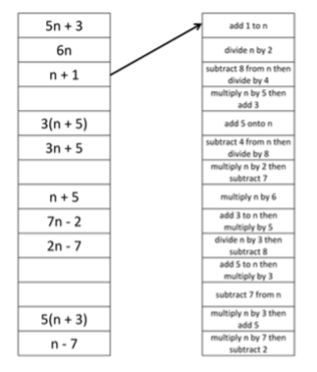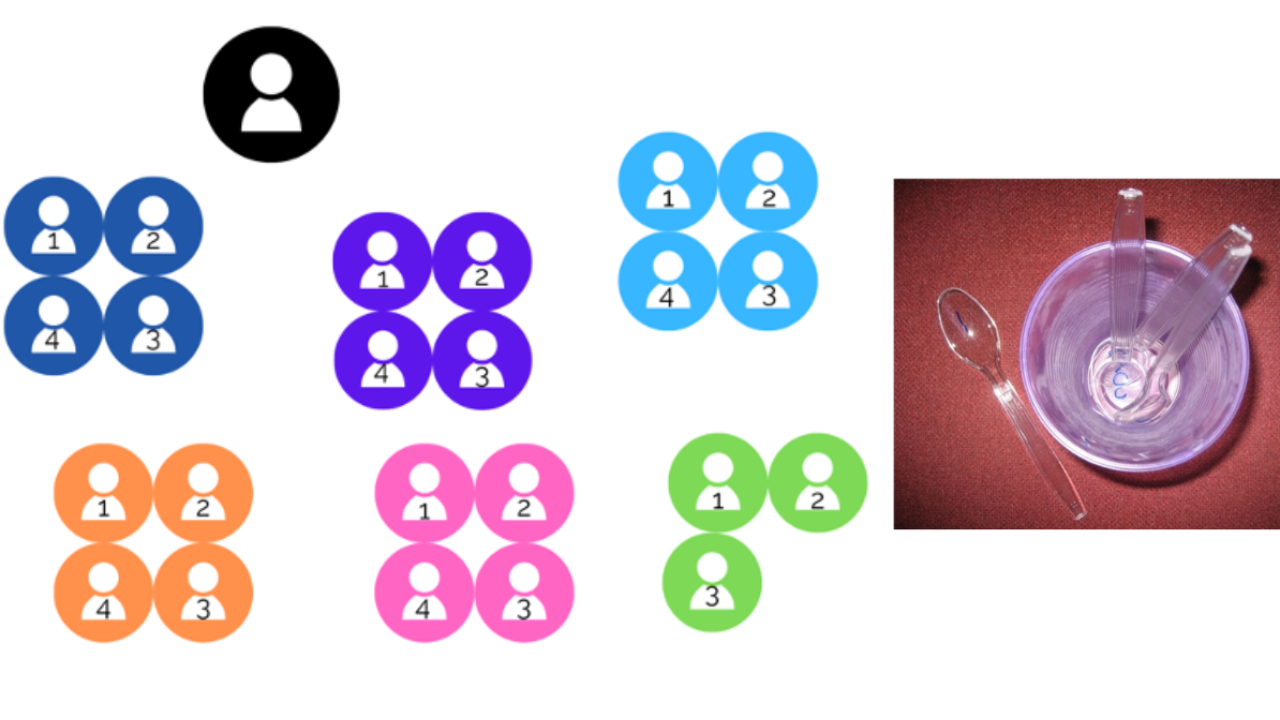When your Questions are met with Silence

Have you ever asked a question to your class or a student and you're met with... crickets. Nada. Zilch. Silencio.
“Hoang, what do you think?”
The seconds tick by. The class grows antsy. The blurters are quivering with restraint.
What’s happening in Hoang’s mind right now? What’s going on behind the scenes?
LEARNED HELPLESSNESS
Perhaps Hoang’s silence is an indication of learned helplessness.
- If I wait long enough, the teacher will call on someone else. It’s worked in the past, why not do it again?
- I could pull out the ‘ol ‘I don’t know’ and cover my head with my hoodie. That always works.
- Maybe I’ll divert attention away from the question and skate by without having to answer. I could fall back in my chair. Or have to go to the bathroom.
TIP: Keep your expectations high!
One of my favorite phrases Jody uses when a student says, “I don’t know” is…
“If you DID know,...
Creating Routines for Motivation

After a busy summer of OCDE Project GLAD® Foundations trainings we are always energized by the enthusiasm of the teachers we’ve had the pleasure to support. Oftentimes, on the last day of the demo the teachers’ take away from the PD was that the students were so engaged and motivated to learn. They want to take that love of learning back to their classrooms and start the year off right with skills for motivating students.
All Project GLAD® strategies are grounded in underlying concepts that create a safe learning environment, where student take risks with language and concepts. It starts with building motivational routines.
Three Personal Standards
When you are creating your classroom culture, communicating and reinforcing clear expectations for behavior is one of the most important things to do to start off on the right foot.

Knowing what to expect and how you will react in many situations creates trust between you...
Where do I find time to prep?

I took my first GLAD® training in the fall of 2004. When I returned to campus after the 5-day demo, my principal asked me to write a reflection of what I had learned. I recently found that (really old) document on my computer while clearing out files.
…One of my favorite strategies was the Narrative. It’s like a story board where you place pictures of the story you’re teaching on a background, and it can be used to teach content, academic vocabulary, and story elements…I also think the expert groups, process grid and cooperative strip paragraph have great promise for teaching note taking from research and expository writing…My biggest concern is finding the time to do the prep that’s required for these new strategies…
Those thoughts have been echoed by multitudes of teachers over the decades!
Your GLAD® training inspires you! Your brain is full of...
Graphic Organizers, Pictorials and Comparatives: What the Big Difference?

Graphic Organizers, Pictorials and Comparatives: What’s the Big Difference?
Drawing while talking, isn’t that the whole idea? Does it really matter what you call it? While the title isn’t going to revolutionize the learning experience, the purpose behind what you’re doing will.
GRAPHIC ORGANIZER INPUT CHART
Let’s start at the beginning. The BIG picture. When introducing a new unit topic we first orient the content in time and space.
How does everything we’ll be learning fit together?
This is the purpose behind the Graphic Organizer. It might be a world map, a timeline, the kingdoms of living things, or any other kind of graphic organizer that gives the BIG picture of the unit.
The graphic organizer is generally the first input chart presented in a new unit of study.
Now, consider your emerging bmultilingual students. What does a graphic...
GLAD® Charts and Overstimulation

It was during an IEP meeting that I learned Nicholas would be joining my 4th grade classroom the following Monday. Nicholas was on the autism spectrum and had spent the first 4 years of his elementary school years bouncing back and forth between self-contained and mainstream classrooms. His parents were excited and hopeful for the mainstream placement, but surprisingly my biggest detractor was a colleague.
The special education teacher, who monitored Nicholas's IEP and would be checking in on him monthly, did not want him placed in "the GLAD teacher's classroom." Her biggest concern was the overstimulation that would surely be a problem for him from all the charts posted on the walls. Yes, my classroom was covered with layers of chart paper that my students and I sketched on, wrote on, highlighted, covered with word cards and pictures, read, chanted, and recited on a daily basis.
I knew Nicholas would most likely be fine, but I needed to...
Building Success with Team Tasks

INTRODUCING A QUICK AND EASY WAY TO OPTIMIZE TEAM COLLABORATION WITH TEAM TASKS
Have you ever been part of a team or committee where one person does all the work? Or conversely, one person doesn’t contribute. The same holds true for our students.
Have you ever tried moving desks into team formation… and then reverting back to rows because it was so painful? Yep. We know the feeling.
Once students are in teams we start by teaching the social skills needed for collaboration to take place. What does collaboration look like? Sound like? (See T-Graph for Social Skills in Acceleration 101: Setting the Stage).
Once you have teams and the T-Graph for Social Skills in place, it’s time to assign team projects or “tasks.”
Setting up those team task for success is our insider tip for today!
Spencer Kagan is a researcher we refer to for ideas to support...
Team Tasks: for practice or assessment?

One of our favorite parts of a GLAD® training is on the last day of the demo when we ask the students what helped them learn. One of their favorite parts is always working with a team during team tasks. The student teams are usually very cooperative and productive during that time but there are occasions, just like in real life, when they are not. In order to be convinced that cooperative learning is worth the effort, the teachers will understandably ask:
What do I do if my kids are messing around during team tasks? Does the quality of their work matter?
The short answer is – Yes, the quality of their work matters. Here are a few key points to keep in mind.
- The purpose of team tasks is small group practice. Remember, in the gradual release of responsibility model we start with whole class for input, small group for practice, and individual work for assessment. All of the team tasks will eventually turn into individual tasks that...
Bell to Bell Instruction

Bell to bell instruction is the idea that everything that happens from the start bell until the dismissal bell is an academic task that engages students toward the learning goals. It is one of the characteristics of a high performing school.
There are many ways that teachers can accomplish this, but we’ll focus on one idea. Reducing transition time!
Let’s reflect on how many transitions there are in the average school day and how much time they take away from instructional minutes available. In the average elementary classroom, there are between 5-10 transitions a day. Come sit on the carpet, go back to your seat, go to your reading group, wash your hands, line up for a specialist or lunch, walk to and from specials or lunch, etc. If each one of these transitions, conservatively, takes 3 minutes that’s 15-30 minutes of lost instruction time a day. If we’re counting based on the reality of a 5-8 minute transition, that is...
Where's My Answer?

Have you ever used matching worksheets with students?
You know, the ones where students connect vocabulary words to the correct definitions, math problems to the correct solutions, beginning sounds to the matching pictures...


These can be helpful tools for individual assessment and preparing students for similar testing techniques in standardized tests. They can be made even more kinesthetic and engaging through online tools such as Jamboard for individual practice at home.
That’s nice, you say… but what does this have to do with Project GLAD®?
Project GLAD® strategies have the power to take what you already do or need to teach, and present it to students in a way that increases language development, communication, social interaction, memory retention and student engagement.
The “GLAD” version of a matching worksheet is a strategy called...drumroll please...
Where’s My Answer
Where’s My...
Setting Up Your GLAD® Classroom

The beginning of the school year brings with it the feelings of anticipation, excitement, and nervousness for students and teachers alike. Dusting off our classroom libraries, moving furniture, and preparing bulletin board space for our students’ first projects are physical tasks we do to set up our classrooms. But we also set up our classrooms by thinking through the classroom structures and routines we’ll use this year.
Were the management structures you used last year effective? Are revisions needed?
Here are 3 quick steps to set up your GLAD® classroom:
- Create your heterogeneous seating chart
Place student desks in teams of 3 or 4. Use any data from last year you have available to create your best guess of heterogeneity. Mix students from different reading levels, problem solving abilities, language proficiency levels, behavior, gender, etc. You’ll be able to update your seating chart the second time around as your beginning of the...


